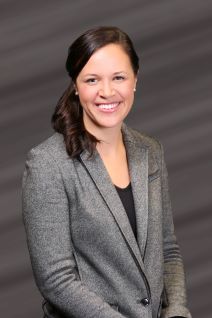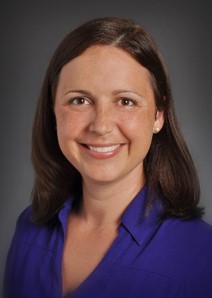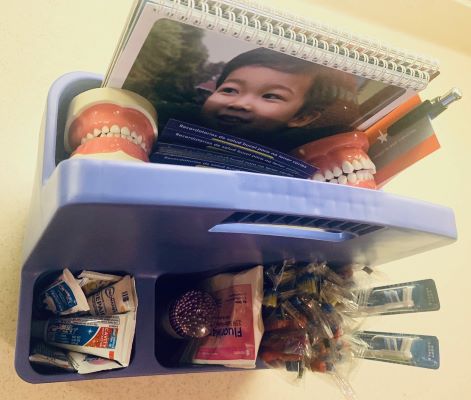Enter your email to receive the CareQuest newsletter:
June 17, 2024
“If they had a job, they could get real insurance and afford to get their teeth fixed.”
“People are lazy if they have state insurance. They’re not as educated as others.”
“Anyone could go to the dentist if they wanted to. They are choosing not to or not prioritizing it.”
These are common perceptions about patients who struggle to access oral health care — a frequent topic during Wisconsin Medical-Dental Integration (MDI) Advisory Council quarterly meetings.
“It’s a lot of negative assumptions about people that are not true, and so it’s figuring out how to challenge that,” says Constance Gundacker, MD, MPH, an assistant professor at Medical College of Wisconsin (MCW). “How do you show that’s not actually the reality?”
The council formed in 2019 thanks to funding from Delta Dental of Wisconsin and the Advancing a Healthier Wisconsin endowment at MCW to support the Wisconsin MDI program, a model that works to incorporate dental hygienists into pediatric and prenatal clinics and health systems. The program was created by MCW and the Children’s Health Alliance of Wisconsin. The Alliance is a grantee of CareQuest Institute.

“[The council] includes stakeholders such as representatives from medical and dental professional associations, the state oral health program, health systems and centers, funding organizations and Medicaid managed care organizations,” says Jenna Linden, BSDH, RDH, the program leader for the Oral Health Initiative at the Alliance. “It has been there from the beginning to help inform and form the progress and change of MDI to hold us accountable.”
It also serves to elevate voices that are often unheard.
“Part of what we were doing with this CareQuest Institute funding is analyzing who we have at the table currently, and what experience they bring that we might not be aware of as far as their relationship to oral health disparities,” Linden says. “And then see where there are potential gaps that we need to fill.”
Elevating Voices of People with Lived Experiences
This year, the Alliance grant funds are focused on advancing the work of its Wisconsin MDI Advisory Council. Using racial equity toolkits, resources, and mental models, and CareQuest Institute’s Continuum of Community Engagement, the council analyzed stakeholder perspectives and established a foundational understanding of what community engagement looks like and why it is a crucial part of informing the Wisconsin MDI model’s progress.

Patient satisfaction and engagement was a part of the initial driver diagram for the Wisconsin MDI program. However, during the first few years of the program, participating clinics expressed a desire to improve understanding of patient satisfaction, and the Alliance and MCW learned there were varying levels of understanding of what community engagement means. With that knowledge, the organizations have been exploring what community engagement means so that all council members have the same foundational understanding. Council members say this is information they can take back to their respective organizations. At a council meeting in October 2023, the council was introduced to an exercise called “Who Is At Your Table?” to analyze who already had a literal seat at the council table and how to incorporate more community voices. Council members were asked to fill out a survey filled with questions from that exercise and other toolkits. They quickly concluded that they needed to add the voices of people with lived experience, such as caregivers of pediatric MDI patients or prenatal MDI patients.
“One of the goals with this is to be able to make sure we integrate caregivers into the committee and give them a sustainable voice on our leadership committees throughout the state,” Gundacker says.
With the input of those with lived experiences, MCW and the Alliance are making positive changes to the Wisconsin MDI program through:
- Creating opportunities for community members to shape the direction of MDI efforts in clinics and health systems in ways that are tailored to the unique conditions of the communities they serve, and
- Identifying and challenging some people’s negative perceptions of the struggle for underserved populations to access oral health care.
“There are structural issues that are impeding people from getting here,” Gundacker says. “And we really need to work together to make those structural changes.”
The Need for Medical-Dental Integration
The Wisconsin MDI program has worked on incorporating MDI into health systems for years. The need for MDI was driven by persistent oral health disparities in Wisconsin communities and the urgency to introduce dental prevention to children at a younger age.

“I think it was partly just looking at the data and where there were gaps in care within Wisconsin,” Linden said. “For example, in 2017, data showed that there were 100,000 children ages zero to five years who were enrolled in Medicaid who were seeing their primary care physician for medical care, but never saw a dentist. So, we were seeing that gap and that huge opportunity that existed within the primary care visit where patients already were accessing care, or their families were. How could we leverage that opportunity?”
In 2017, the opportunity to include dental hygienists in medical teams emerged following legislative adjustments that allowed dental hygienists to work independently in settings such as medical offices and nursing homes.
“The nurse assesses the patient, followed by the doctor or pediatrician’s time in the room and their exam,” Linden says. “Then, typically, the dental hygienist would be next for about 5–10 minutes as part of that appointment in the exam room.”
It’s a busy 5–10 minutes.
“During that timeframe, they’ll do a dental hygiene assessment, fluoride varnish — they’ll apply silver diamine fluoride if it’s indicated,” Linden says. “They’ll provide anticipatory guidance and then identify the need for follow-up care.”
The first large health system that enrolled in the program had a hospital that was spending significant amounts of time and money on general anesthesia operating room (OR) cases for kids who had rampant caries.
“They also had surgeons who were wanting OR time for other surgeries beyond treating a mouthful of caries, and so that, too, was another turning point,” Linden says. “I think part of it’s a shift: We’re making an investment in prevention right now within this population, so that we can prevent these long-term costs and all of the ripple effects that are associated with children having caries.”
The program has grown and now has integrated 13 dental hygienists into teams across five Federally Qualified Health Centers, two large health centers, and one nonprofit clinic in the state.
On top of improving the council, MCW and the Alliance are also working on making the billing system more equitable, so that hygienists can bill insurance companies directly, no matter whether that patient has private insurance or state insurance.
“Just trying to work through how we can better address billing challenges and inefficiencies, pinpointing what are the issues, and how can we brainstorm and test solutions to support sustainability and spread of the model,” Linden says.